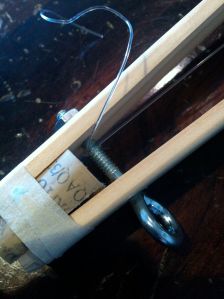The other day I hit a sweet spot. For me that’s having my recording equipment with me at just the right moment. I was in the subway station, in a haze of work stress, until the sounds of beautiful music down the platform lifted me out of my funk. Sometimes it just takes one thing–a sound, a picture, a taste–to pull me out of my head and make me appreciate the moment.
I walked to the opposite end of the platform–moving away from the place that would line me up perfectly with the stairs at my destination, which for any frequent subway-commuter is a no-no. (Do you do this too?)
The man playing the music looked so calm, so confident in his abilities. He was definitely sound inspiration for my day!
Take a listen to his music…notice the part where the subway enters the station, barreling through the tunnel. The music just keeps going.
It’s not subway musicians that inspire me…it’s the whole package. Over the near-decade that I spent in NYC, I practically lived on the train (for one year I even endured an hour and 45 minute commute each way–let’s just say that I got comfortable moving through space with lot’s of others). I love hearing different languages, reading over people’s shoulders, imagining what riders could be thinking and where they’re going…
While we’re on the subway subject, here are some subways from around the world. What’s your favorite subway system?
(Photos clockwise from top: Man playing music in NYC subway/Jessica Ilyse Kurn; Mexico City subway 2; Munich Subway 3; Paris Metro 4 & 5; London 6)
And of course my beloved Boston T
Please share some of your favorite subway experiences in the comments!
xoxo,
Jess
PS: Check out these earrings…on my “I want asap!” list.









